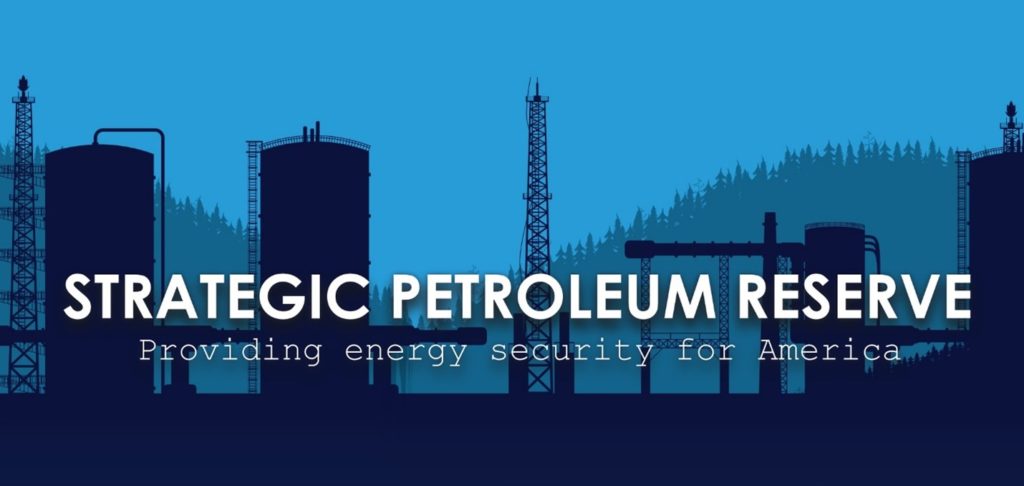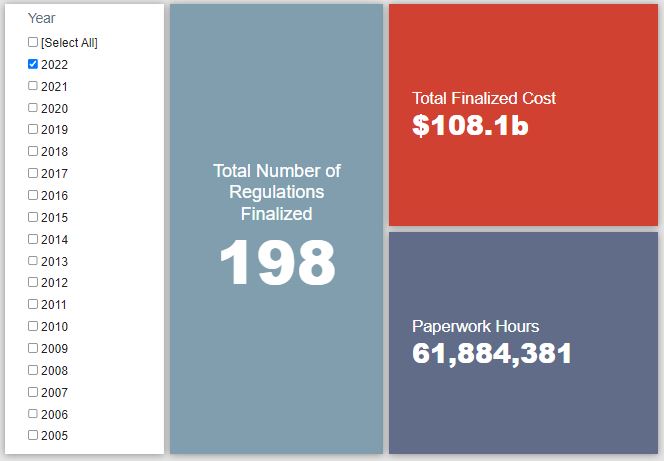Week in Regulation
October 31, 2022
Another Quiet Week with Cross-cutting Rulemakings
Last week’s regulatory activity remained as cool as an autumn breeze. There was only a half-dozen rulemakings with some measurable economic impact. Perhaps the most interesting aspect of the week’s regulatory haul was that the two most notable rules essentially canceled out the other’s cost effects. Across all rulemakings, agencies published $5 million in total net cost savings but added 71,594 annual paperwork burden hours.
REGULATORY TOPLINES
- Proposed Rules: 36
- Final Rules: 48
- 2022 Total Pages: 65,408
- 2022 Final Rule Costs: $108.1 billion
- 2022 Proposed Rule Costs: $124.6 billion
NOTABLE REGULATORY ACTIONS
The two most significant rules of the week each brought costs and savings of equivalent value, albeit in addressing wildly divergent issues. The first was a Nuclear Regulatory Commission measure regarding “American Society of Mechanical Engineers 2019-2020 Code Editions.” The rule incorporates established industry practices into official regulatory code, resulting in “a net averted cost for industry of $10.2 million.” The cost-adding rule was the Department of Education (ED) rule regarding “Pell Grants for Prison Education Programs; Determining the Amount of Federal Education Assistance Funds Received by Institutions of Higher Education (90/10); Change in Ownership and Change in Control.” As the title suggests, the rule makes a series of changes to Pell Grant requirements. ED estimates that the administrative burdens of these new policies will involve 70,272 additional hours of paperwork with $3.4 million in commensurate costs annually (or $10.2 million over the three-year period in which paperwork requirements can be approved).
TRACKING THE ADMINISTRATIONS
As we have already seen from executive orders and memos, the Biden Administration will surely provide plenty of contrasts with the Trump Administration on the regulatory front. And while there is a general expectation that the current administration will seek to broadly restore Obama-esque regulatory actions, there will also be areas where it charts its own course. Since the AAF RegRodeo data extend back to 2005, it is possible to provide weekly updates on how the top-level trends of President Biden’s regulatory record track with those of his two most recent predecessors. The following table provides the cumulative totals of final rules containing some quantified economic impact from each administration through this point in their respective terms.
![]()
As discussed above, the two main final rules of the week essentially canceled each other out on the cost front. The ED rule, however, did move the Biden Administration’s paperwork total a bit. There was not much else to report across the other administrations, either. Trump-era cost and paperwork totals ticked up by $28 million and 65,000 hours, respectively. The Obama paperwork total saw the most notable shift, increasing by nearly 800,000 hours. A Department of Agriculture rule on the “Crop Assistance Program” provided the largest chunk of that increase.
THIS WEEK’S REGULATORY PICTURE
This week, the Department of Energy (DOE) updates its acquisition rules for the Strategic Petroleum Reserve (SPR).

Via Department of Energy
On October 25, DOE published a final rule in the Federal Register regarding “Procedures for the Acquisition of Petroleum for the Strategic Petroleum Reserve.” The rule updates how DOE obtains oil for the SPR.
The SPR was created in the 1970s to deal with significant disruptions of petroleum supplies as part of the Energy Policy and Conservation Act. The same law authorized the Secretary of Energy to obtain supplies for the SPR. The Energy Policy Act of 2005 updated this authority to require DOE to issue regulations spelling out the procedures used to acquire petroleum for the SPR. Those regulations were finalized with a 2006 rule.
DOE decided that updates were necessary to better reflect “changes in statutory authority, agency practice, and market dynamics.”
The rule updates DOE’s regulations in five ways. The first is to update important definitions, including, curiously, “DOE” and “Strategic Petroleum Reserve.” A second update strikes provisions that allowed DOE to acquire oil that the Department of the Interior (DOI) received as an in-kind royalty from production on federal land (DOI ended its in-kind program in 2010 following reports of misconduct).
A third change codifies the SPR’s emergency exchange program whereby DOE provides supplies to refiners in times of need with the promise the same amount plus a premium will be returned to the SPR in the future. A fourth update loosens restrictions on how DOE enters contracts, allowing it to utilize either fixed or indexed pricing. The final update provides regulatory language “to suspend previously announced or contracted acquisitions of petroleum products or divert the injection of petroleum products into the SPR when there is a perceived imminent severe energy supply interruption,” an authority granted to DOE that had not previously been codified in its regulations.
TOTAL BURDENS
Since January 1, the federal government has published $232.7 billion in total net costs (with $108.1 billion in new costs from finalized rules) and 137.1 million hours of net annual paperwork burden increases (with 61.9 million hours in increases from final rules).












